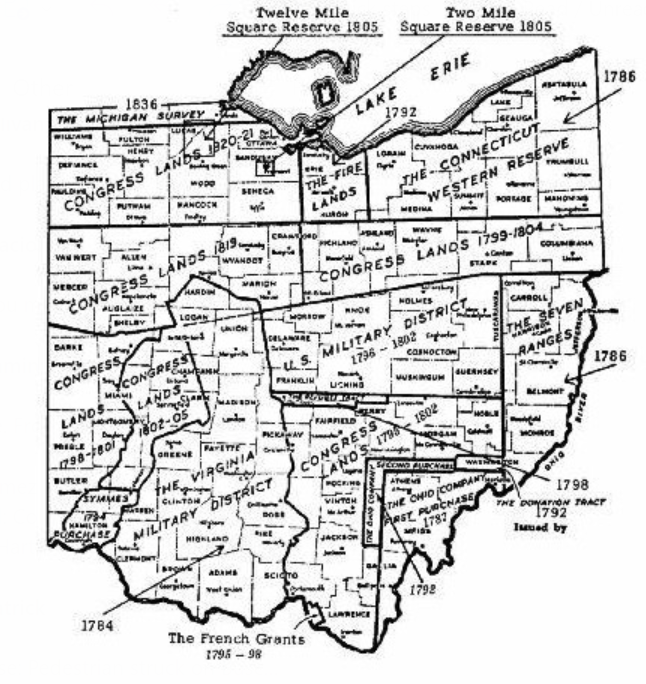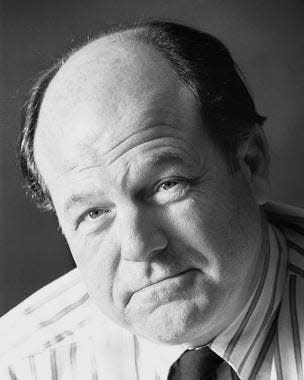Desire for central location, land grant sales helped lead to Columbus' creation

Columbus is a created city.
There was no town on the High Banks opposite Franklinton at the forks of the Scioto until the Ohio General Assembly brought a new state capital into being on Feb. 14, 1812. We often focus on what happened next as a small group of hardy souls — threatened by fire, flood, disease and hostile neighbors ― hacked their way through a swampy forest to make a new home in a new land.
But perhaps more interesting questions might be posed.
First, why here? The main reason the Ohio General Assembly was interested in this area was simply that theydid not like their current capital. The Northwest Territory had come to the new United States as a cession fromGreat Britain at the end of the American Revolution. The new nation was burdened with debt and had little inthe way of savings or sources of revenue. But it did have a lot of land north and west of the Ohio River. TheLand Ordinance of 1785 set forth a way to measure the new country and the Ordinance of 1787 provided a formof government.

The first and only governor of the Northwest Territory was General Arthur St. Clair. He was brave, bold andambitious. He was also an admirer of the finer things in life. He established himself for a time in Marietta, thefirst settlement north of the Ohio in 1788, but soon moved his headquarters to Fort Washington and its attendantvillage which he, St. Clair, would soon rename.
The original name of the town was Losantiville – a tongue twister denoting that the town [ville] was across [anti] from the mouth [os] of the Licking River [L]. St. Clair found the name deplorable and decided to uplift the town and its residents by naming it honor of the secret Society of Cincinnatus, of which he was a member. He named the rustic village Cincinnati and took pleasure in the creature comforts offered by good food and drink and good company.
Their comforts were left behind with St. Clair when a small group of Jeffersonian rebels conversed, conspiredand constituted the new state of Ohio. The leaders of the new state were Gov. Edward Tiffin and hisbrother-in-law, Thomas Worthington. They placed the new capital city in a place they liked – their hometownof rather rural Chillicothe.
Many of the members of the Ohio General Assembly came to quickly dislike the place. It was away from comfortable civilization and it was in isolated southwest Ohio. The movement to find a new home in the center of the state became irresistible. Eventually, the legislature settled on a proposal to place the capital city on the High Banks opposite frontier Franklinton.
The new capital was not at the exact center of the state. But it was close. And it was empty.
Next question: Why was it empty? Partly it was empty because of that very centrality. The new state of Ohiowas a concoction of many different land grants rather rapidly established by the new nation. In central Ohio, onefound Congress Lands to the south and east, U.S. Military Lands for veterans to the north and west, and theVirginia Military District for veterans and anybody wanting cheap land to the west of the Scioto River. And in themiddle of all of these land grants meeting in the middle of Ohio was the Refugee Tract.
Beginning at the Scioto, the Refugee Tract ran east, bordered by Fifth Avenue on the north to Refugee Road on the south. The narrow land grant was set aside for residents of Nova Scotia who had lost property to the British during the American Revolution. A few of these intrepid people actually made it to Ohio. Truro Township in FranklinCounty is named for Truro Township in Nova Scotia.
But most of the holders of land grants in the Refugee Tract never made it to Ohio. They sold their land warrantsto whoever had the money to buy them. In many cases, these buyers were “gentlemen of property and standing”who were happy to indulge in a little real estate speculation. The land warrants were sold and resold, often to thehighest bidder.
As that was happening, the land itself remained vacant and empty. It was one of the few times that hadhappened. The High Banks opposite Franklinton had been the home to people for more than 2,000 years. Theearliest inhabitants had been Mound Builders. The Adena, Hopewell and Fort Ancient people had lived on theridge and built a forty-foot mound at what is now the intersection of Mound and High streets in Columbus.
With the departure of the Mound Builders around 1400, the land became home to historic Native Americans:Shawnee, Leni Lenape, Wyandot and Iroquoian Mingo. But now the land was empty and in the hands of four "proprietors," who offered land and cash for a new capital city.
That city was created and soon came to be called Columbus. And the capital city has been a place of people and power ever since.
This article originally appeared on The Columbus Dispatch: Most land grant holders in central Ohio sold, helping create Columbus

